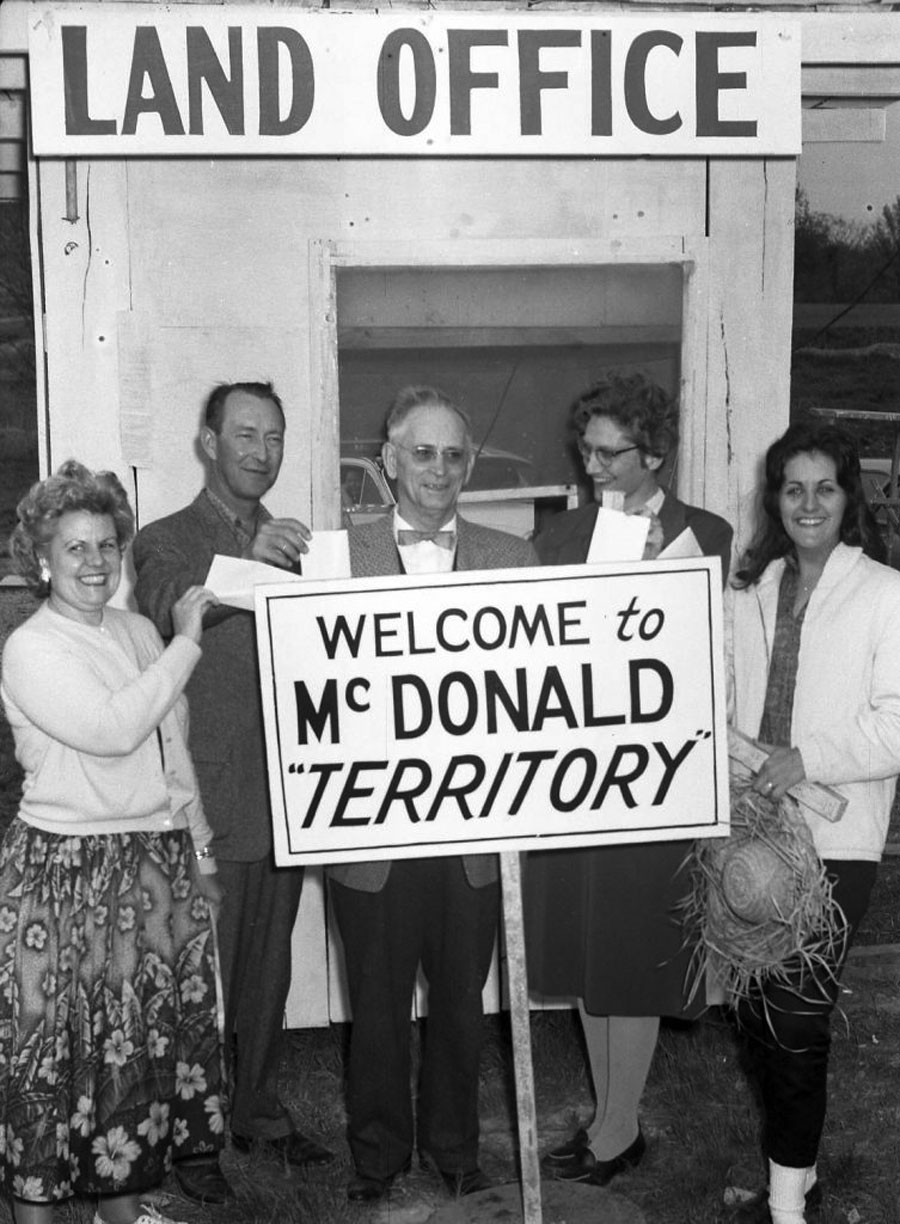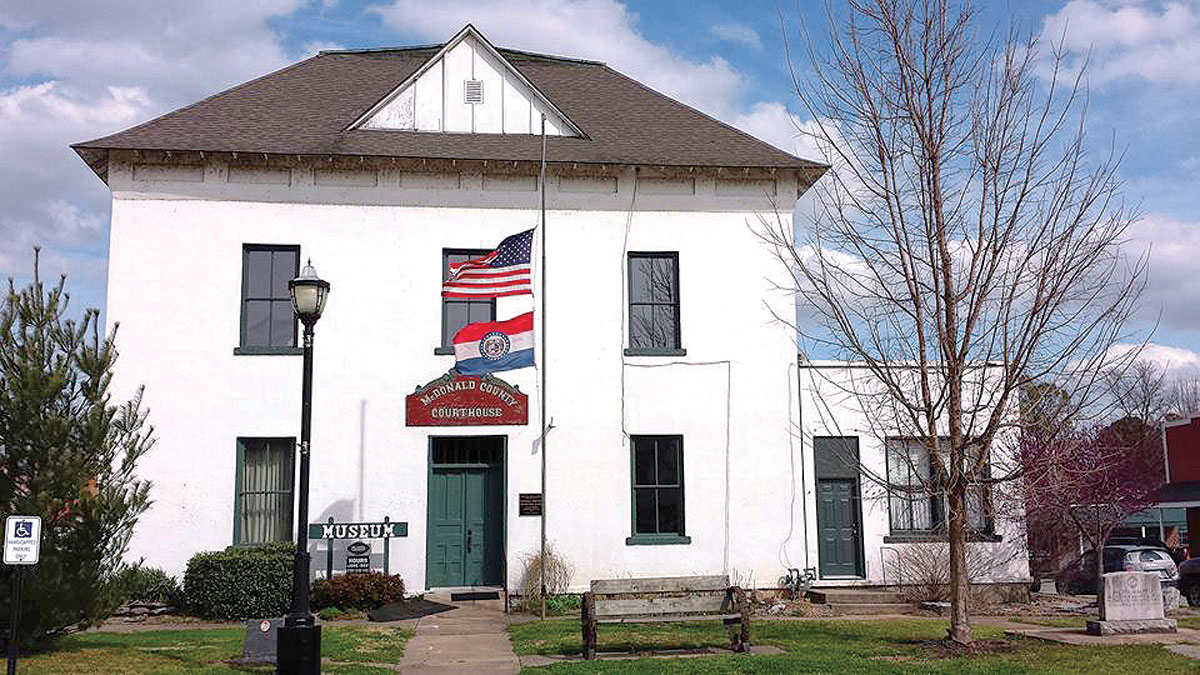 Former courthouse now tells the story of McDonald County, Mo.
Former courthouse now tells the story of McDonald County, Mo.
Preserving the stories and history of our predecessors is of utmost importance for those who would come after us. Many communities have a local historical society and a quaint museum displaying items from yesteryear. But some places just have a flair for some pretty interesting, if not humorous, legacies in need of preservation.
McDonald County, Mo. is one of those places.
Karen Dobbs, president of the McDonald County Historical Society, loves the county she calls home and like many others, spends countless hours and elbow grease creating a “living museum” in the old courthouse on the Pineville square.
As a border county in a border state during the Civil War, it is no surprise that there were conflicts in Pineville, the county seat. One skirmish in August 1863, resulted in the defeat of Confederate Col. John Coffee, losing more than 60 men in the conflict.
In 1864 the courthouse was burned to the ground with all the counties records and no clear evidence of whether it was soldiers or angry citizens. A new one was built in 1871 with three metal vaults to protect important documents.
The McDonald County Historical Society was formed in 1963 but only served to collect items from around the county. The society leased the old sheriff’s house, which opened in 2007 as the first museum.
In 1978, word spread that the county was planning to raze the large old courthouse, prompting Jo Pearcy, a school teacher in Pineville, to leave her classroom and march down to the county commissioners meeting. They conceded and allowed Jo to lease the building, which was in various stages of disrepair.
Determined to give the structure new purpose, she and her mother worked to make it an arts and craft center and little café to support the maintenance and repairs.
In 2010, the McDonald County Historical Society took over the lease and work began to revive the building and the stories of the county’s people. All renovations came through grants, donations and fundraisers. Regular citizens calling the county home, whether living there or aboard, became vested in this effort and to date have raised nearly $60,000.
By 2013, the old courthouse first floor was opened to visitors.
But not wanting to be just a repository for stuff, the society commissioned a museum curator to come give an assessment. Clearly, there was a lot of work remaining to fix a leaky roof and other issues typical of old structures.
However, one point was driven home – it has to be a “living museum” or it may fail.
Volunteers and historical society members formulated a plan, developing committees responsible for different aspects of the operation and design of the museum. Fundraisers were created to help support and improve the museum.
“We do a fund-raising banquet with auction, sell calendars, raffle a painting by Native American artist, Doug Hall,” Karen added. “And in its second year, a radio play called ‘Snake County Stories.’ crafted from the oral histories of McDonald County.”
Each room of the old courthouse follows a particular theme. One focuses on the agricultural ventures within the county. Orchards and strawberries put the county on the map. In fact, Anderson was considered the “Strawberry Capital of the World,” with the Neff family west of Anderson having one of the largest operations in the county.
“To make each display come alive the society opted to invest in Dorfman mannequins,” Karen said. “Dorfman’s are created to match a real person down to their height, hair color, eye color and other features.”
Another room focuses on music of Albert Brumley from Powell, famous for such hymns as, “I’ll Fly Away” and “Turn the Radio On.” He wrote more than 800 songs and was inducted into the Nashville Songwriters Hall of Fame, and the Gospel Music Hall of Fame.
Of all the themes, two are the most fascinating.
In 1961, the Missouri Department of Transportation committed a huge offense. First, it renamed highways and did not inform locals and second, they forgot to add McDonald County as a vacation destination.
Locations like Noel and other river locations had been frequented for decades by families and party-goers.
So, what did the residents do? They drafted secession paperwork to the state.
Despite the serious dilemma that upset the residents in the first place, their “take a stand” attitude became a boon for business, as people traveled to the little county to get stopped at the ‘border’ by hillbilly ruffians demanding to see their McDonald County visas and then cheerfully escorted them into the territory.
They printed secession visas, stamps, bottled their own brand of secession moonshine and even staged a land rush, all on display in the Secession Room.
Another themed room highlights the making of the 1938 film, “Jesse James,” filmed in locations around McDonald County. The movie starred Henry Fonda, Tyrone Power and local Dabbs Greer, who would go on to fame in “Little House on the Prairie,” as Reverend Alden.
Of all the museum possibly the most beautiful room is the restored courtroom upstairs that serves as the location for rotating exhibits.
The first was 100 Years of Fashion exhibit showcasing donated clothing items from 1870 through 1970. The current exhibit is the Stories of Military Service, featuring individual stories of those McDonald County residents who served our nation and displays of 113 individual quilted photo squares of the county’s veterans.
The museum opens the weekend of Memorial day with Living History events on the square and then every Friday and Saturday 11 a.m. to 4 p.m., through December. To encourage the study of county history, volunteers assist with a special tour for the area fourth grade students.
With a membership of almost 250, the determined group of historian preservationists logged more than 2,000 volunteer hours in 2018 making sure that McDonald County history makes an indelible imprint on her visitors and maybe even a smile or two.








This is a lovely little gem of a museum, and it shows the devotion and effort of all the people who contribute to it. Pineville is worth the trip!